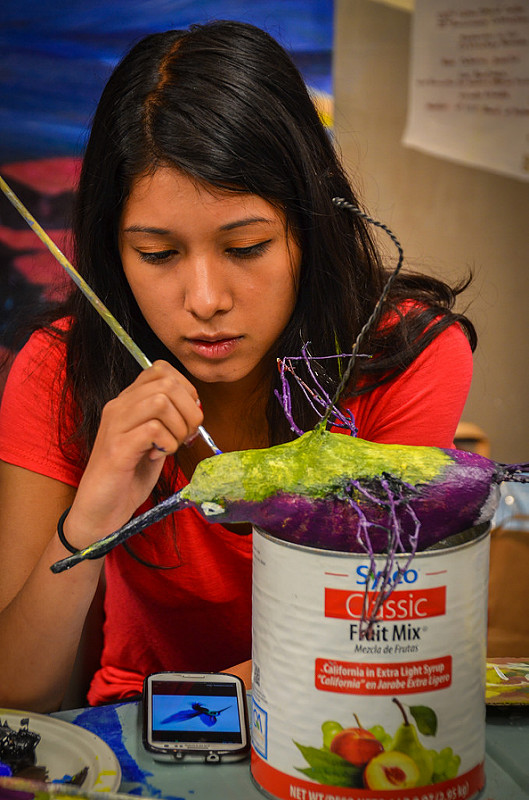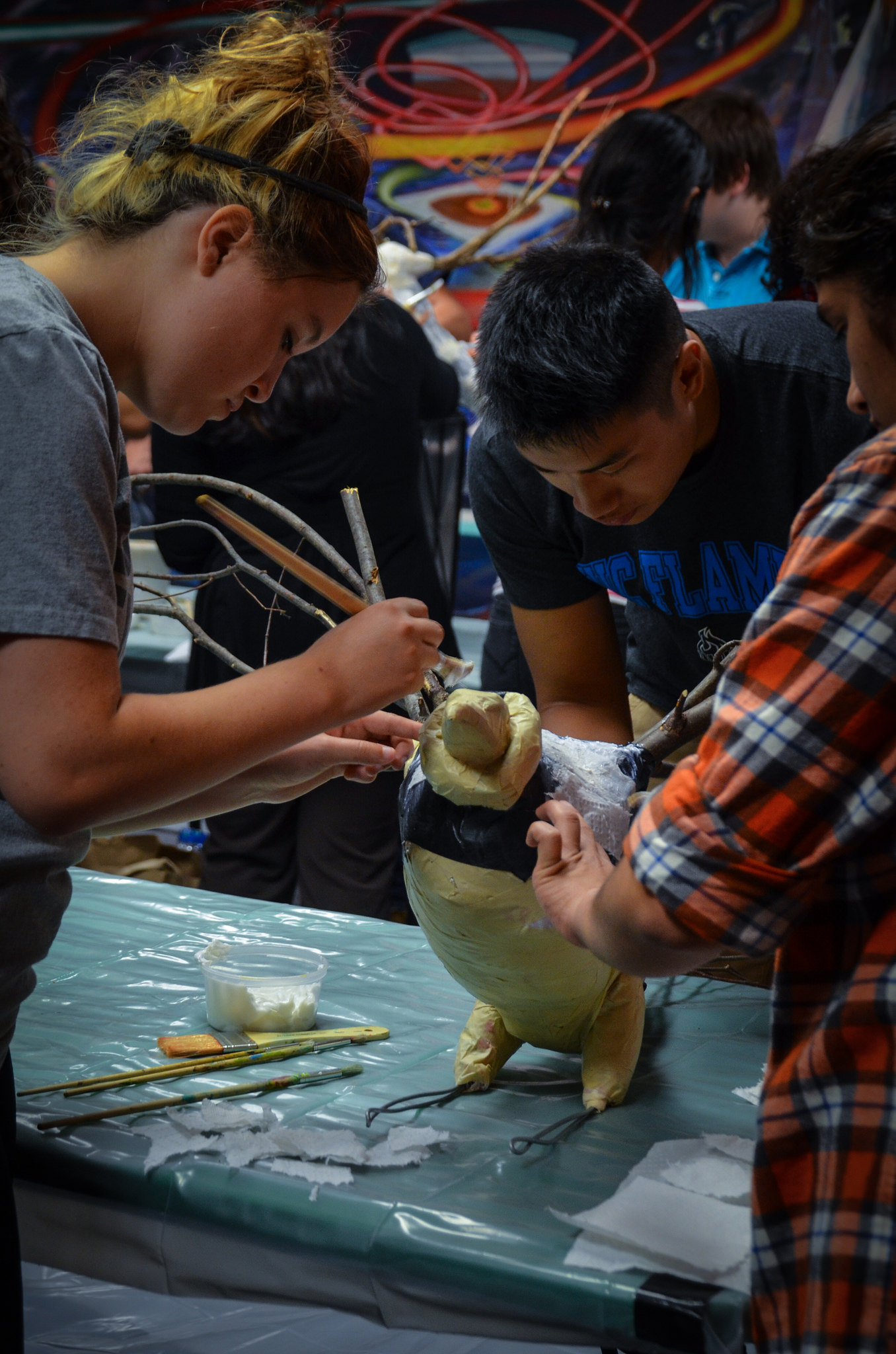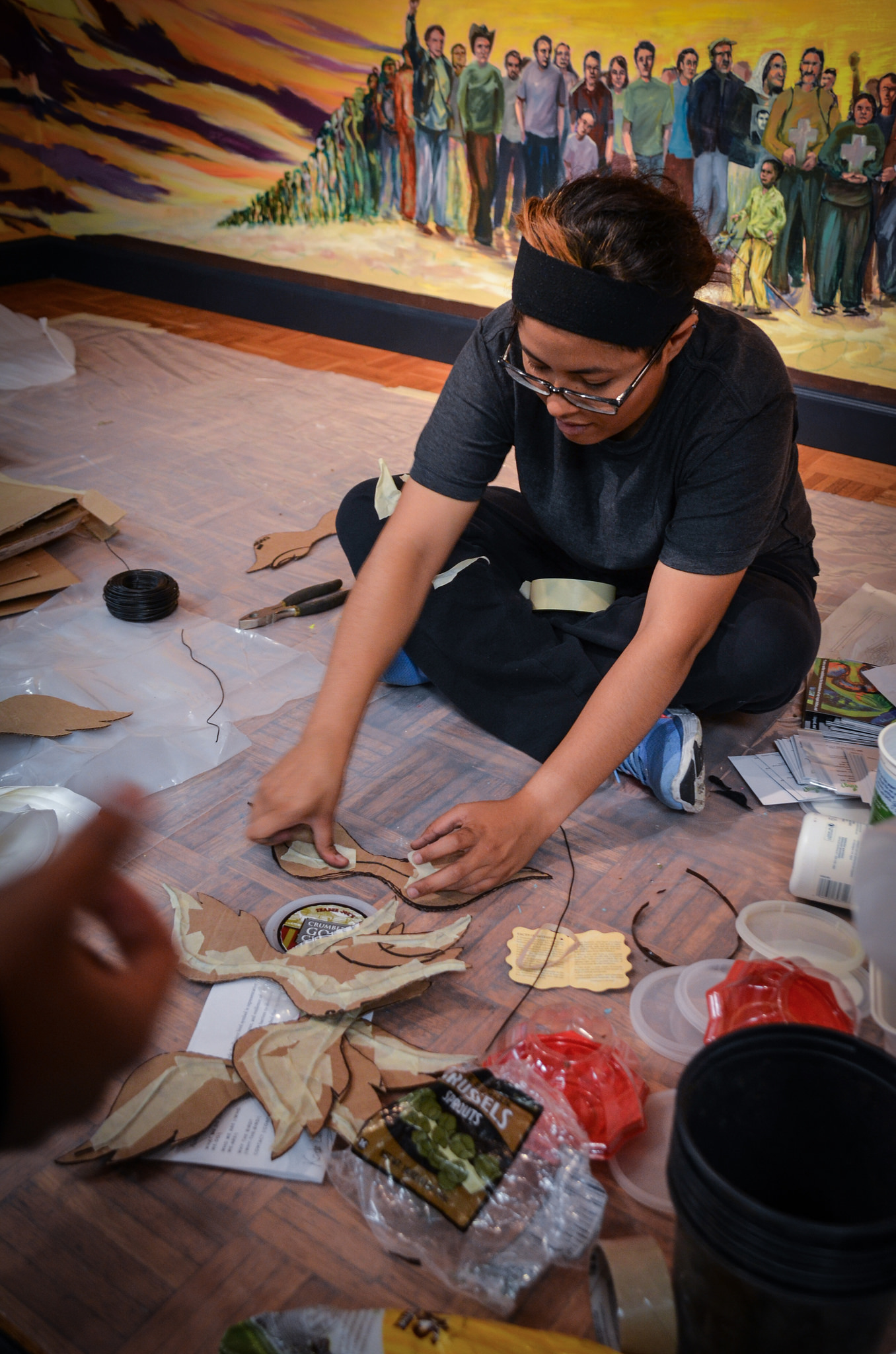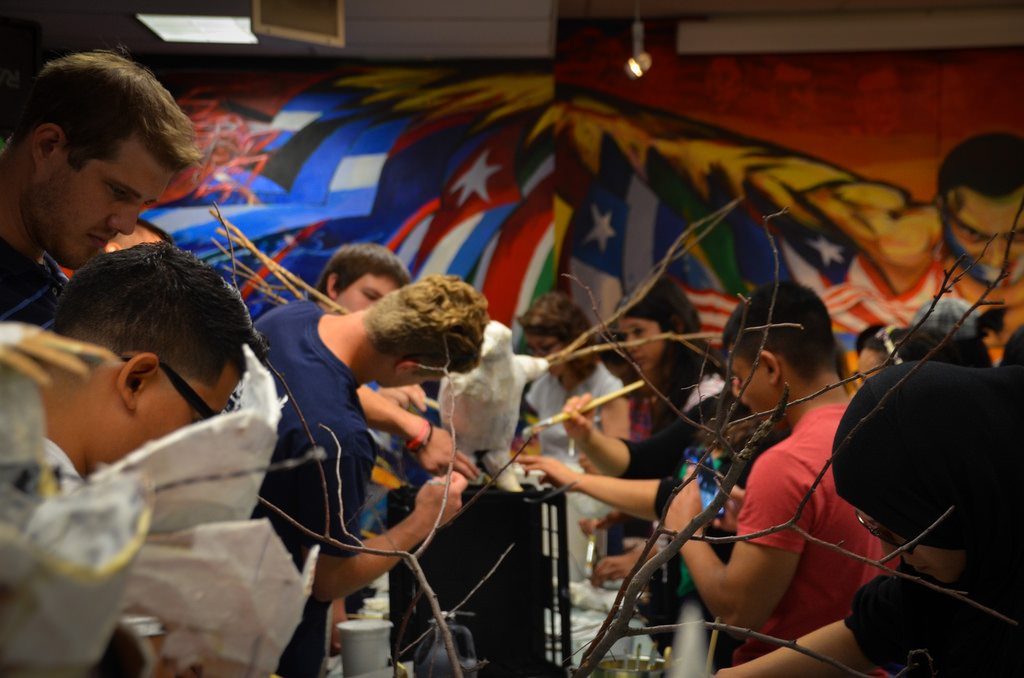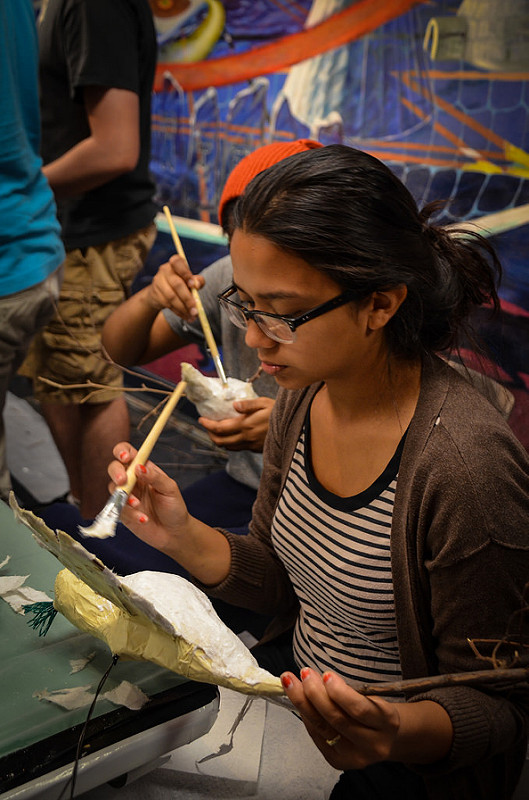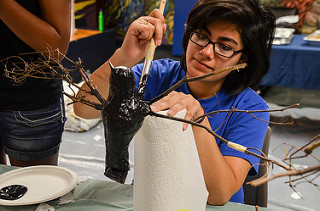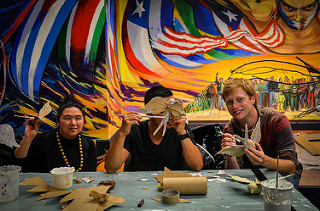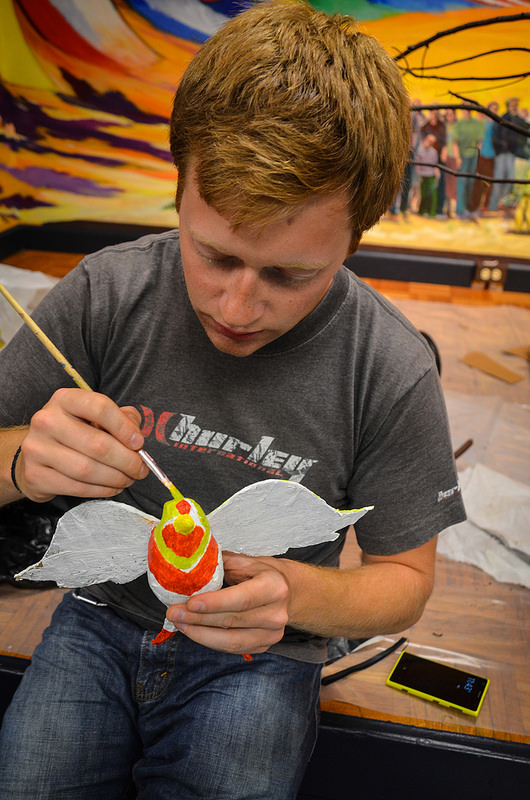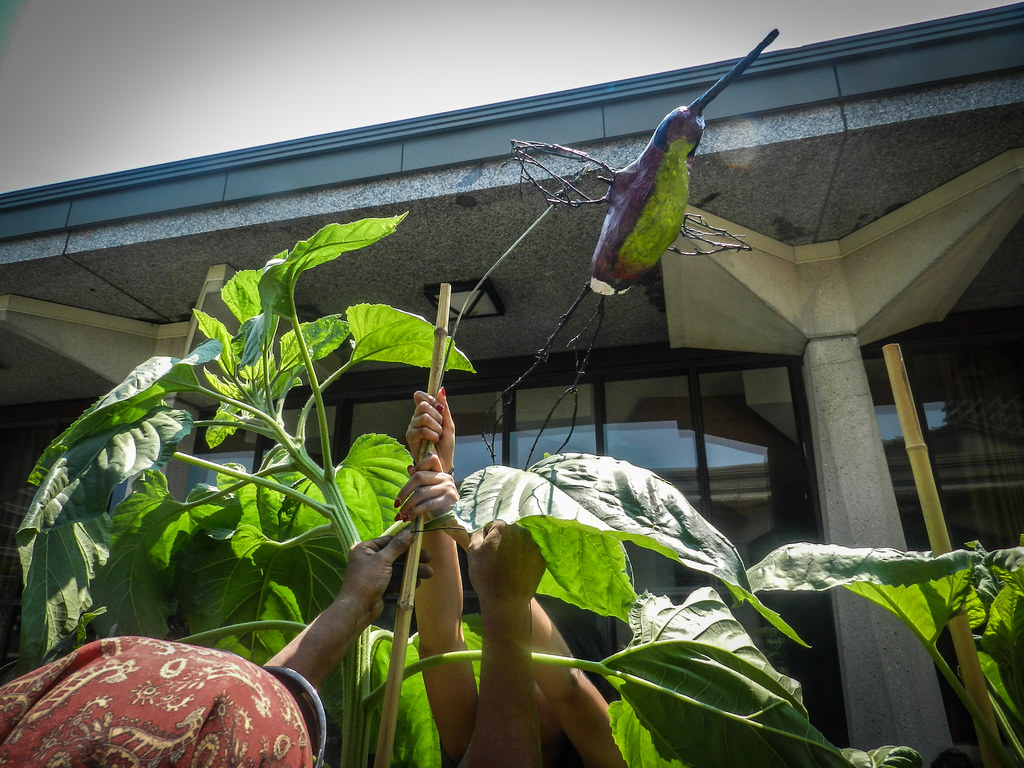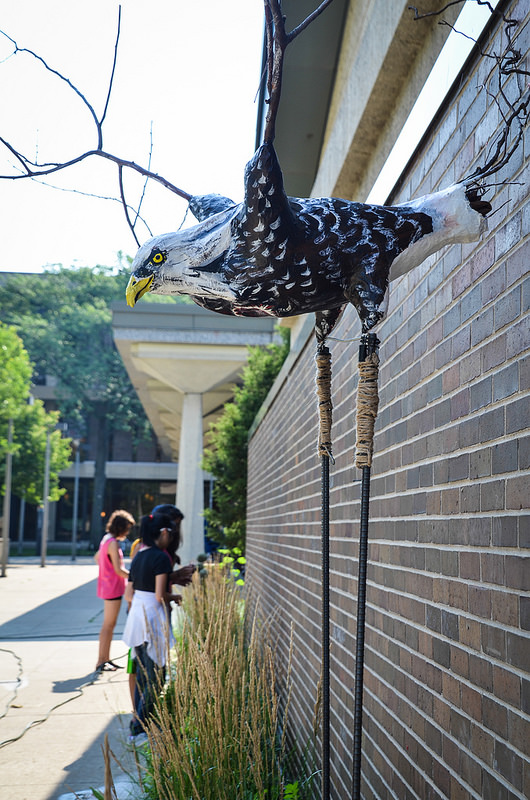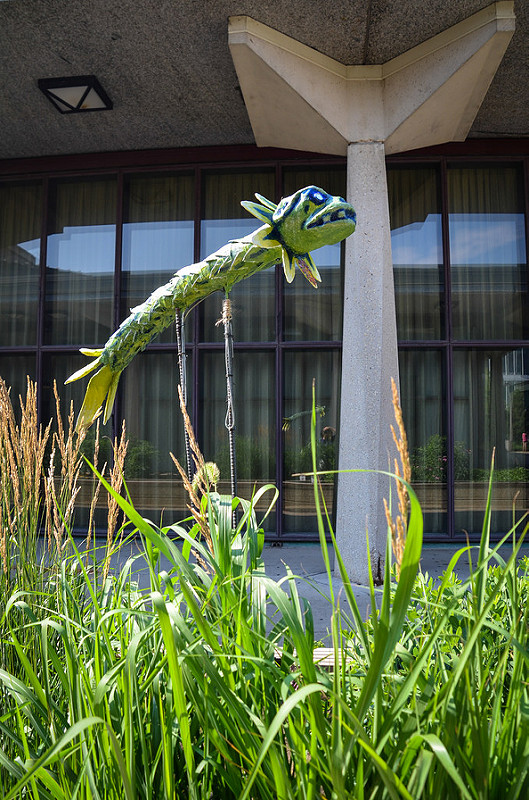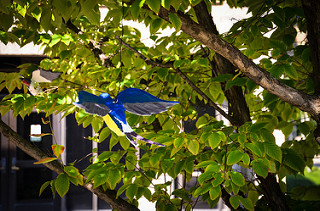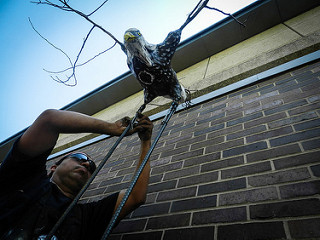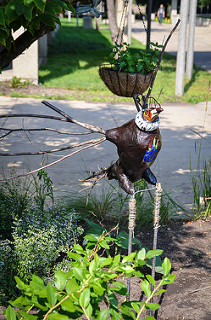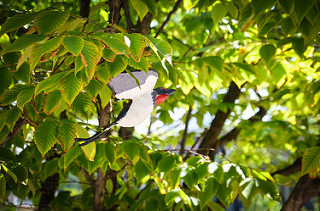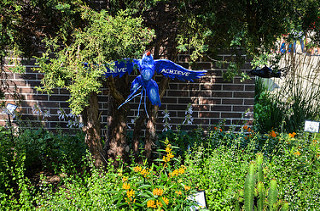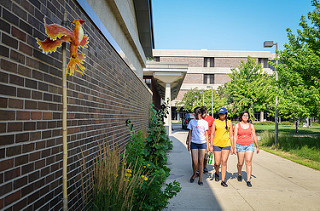The 2014 UIC Heritage Garden invited local artist Alfonso “Piloto” Nieves Ruiz to work with the Heritage Garden interns on an installation for the satellite gardens that embodies the ideals of environmental and cultural sustainability through art. Art is a tool in the conversation of sustainability, as the ability to engage in creative thinking and to employ inventive and innovative solutions for the current issues of the environment is necessary to bring a shift in the awareness of the world’s inhabitants, to one that is mindful of the interconnectedness of humans, the earth, and all of life and the implications of our actions on the environment. Art is as necessary as technology in the genesis of a new environmentally sustainable age, as a shift in consciousness is required, from one that is dominated by consumerism, to one that is mindful of the full environmental, cultural and social implications of one’s choices.
The project provides an artistic depiction of the Heritage Garden’s overall philosophy, which is to connect cultural diversity with environmental sustainability and social justice. Piloto’s guiding philosophy gracefully aligns with the mission of the Heritage Garden, which emphasizes the environmentally friendly practices inherent in cultural folkways and heritage
CREATING
The art project uses roots, branches, and plastic waste materials, which together represent the freedom of birds and connection to the earth. The birds have been installed into the Heritage Garden satellite sites, and, like the Monarch butterfly, are a symbol of movement, migration, and ultimate transformation, as the magnificent works of art have been conceived from discarded plastic and roots. Just as birds exist as a symbol of physical migration and the freedom to cross borders, they too stand for the freedom to think freely.
Piloto’s original bird sculptures, which inspired the project, provide the philosophical basis for the installation: “I was giving the birds the roots as wings, and I was thinking that if you go back to your roots and you tie yourself to your roots, you can fly, because you start getting more freedom and knowledge.” Each intern constructed a bird out of discarded plastic piping, plastic bags, roots, and branches. Then, painted the birds. The roots are a symbol of both literal grounding to the earth as well as connection to personal past. The juxtaposition of the soaring of the birds and grounding action of the roots links directly to the Heritage Garden’s emphasis of cultural heritage, and getting to our source of identity. Roots symbolize the source, which is crucial in the conversation of sustainability.
Installation
Four of the larger bird sculptures have been placed in separate planters across the quad, representing the four directions, with each direction having distinct spiritual symbolism. Each direction represents phases of life with their associated virtues. Furthermore, at the center of each bird’s chest is a heart, identical to the large corazon in the Latino Cultural Center’s mural by Hector Duarte. The heart, which represents the Spanish saying “con el corazon en mano,” or “with heart in hand,” implies being welcomed with honest and peaceful intentions. Each heart is painted in a different color that corresponds with the planter direction it inhabits. The Eagle heart to the north is painted black, and represents the place of the elders, those qualities being wisdom, reflection and introspection. The heart of the Condor to the south is painted blue, and represents youth, childhood and life, with the blue signifying will power, or the power of will. The heart of the Quetzalcoatl to the east is painted yellow, and represents consciousness, as well as the creative energy of the man. To the west is the Osprey, with heart painted red. The Osprey represents the energy of the woman, who is the warrior of love.


